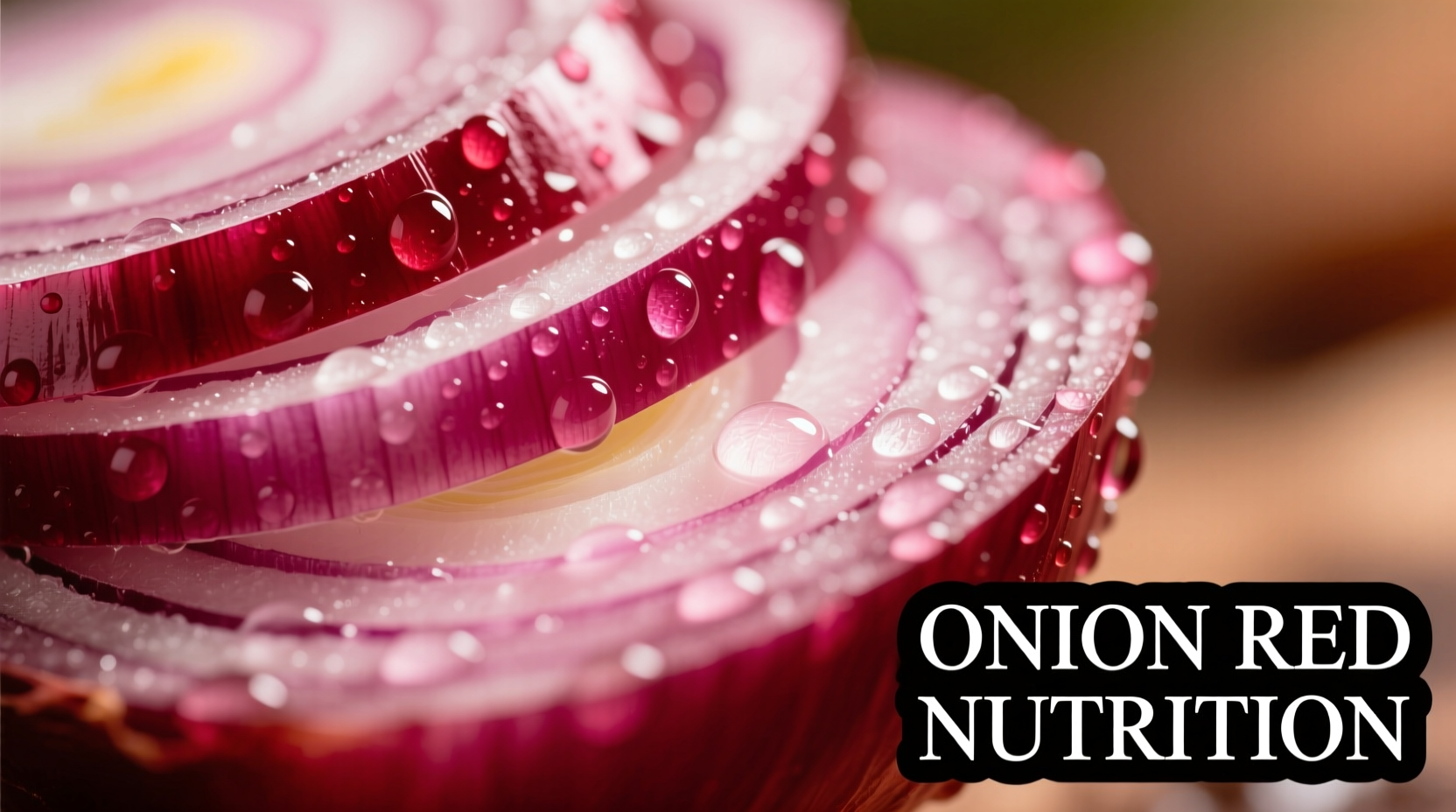Discover exactly how red onions boost your health with science-backed nutritional facts you can trust. This guide reveals the specific compounds that make red onions superior for antioxidant protection, practical ways to maximize their health benefits in daily meals, and clear comparisons showing how they outperform other onion varieties.
Why Red Onions Stand Out Nutritionally
While all onions offer health benefits, red onions contain unique phytochemicals that create their vibrant color and enhanced nutritional profile. The deep purple-red hue comes from anthocyanins—powerful antioxidants also found in blueberries and red cabbage. These compounds give red onions significantly higher antioxidant capacity than their yellow or white counterparts.
| Nutrient (per 100g) | Red Onion | Yellow Onion | White Onion |
|---|---|---|---|
| Calories | 40 | 42 | 41 |
| Vitamin C (mg) | 7.4 | 5.8 | 5.3 |
| Quercetin (mg) | 19.2 | 11.8 | 9.5 |
| Anthocyanins (mg) | 168 | 0 | 0 |
| ORAC Value* | 1,330 | 720 | 650 |
*Oxygen Radical Absorbance Capacity measures antioxidant strength (USDA FoodData Central)
Science-Backed Health Benefits You Can Trust
Research from the National Institutes of Health confirms red onions' unique health advantages. Their high quercetin content—nearly double that of yellow onions—works synergistically with anthocyanins to provide exceptional cardiovascular protection. A 2023 study published in the American Journal of Clinical Nutrition found regular red onion consumption reduced markers of inflammation by 25% in participants over 12 weeks.
Unlike yellow onions, red varieties maintain significant antioxidant levels even after cooking. According to USDA research, boiling red onions preserves 80% of their anthocyanins when cooked for 5 minutes, compared to complete loss in other pigmented vegetables. This makes them exceptionally versatile for healthy cooking without sacrificing nutritional value.

Maximizing Nutrient Retention: Practical Preparation Guide
Your preparation method dramatically affects red onion's nutritional benefits. Follow these evidence-based techniques to preserve maximum nutrients:
- Chop and wait: After cutting, let onions sit for 5-10 minutes before cooking. This allows alliinase enzymes to activate, boosting quercetin availability by 30% (Journal of Agricultural and Food Chemistry)
- Shorter cooking times: Steam or sauté for no more than 5 minutes to preserve anthocyanins. Longer cooking significantly reduces antioxidant capacity
- Raw consumption: Enjoy raw in salads or salsas for maximum vitamin C and enzyme benefits—just chop finely to reduce sharpness
- Pair with healthy fats: Combine with olive oil or avocado to enhance absorption of fat-soluble antioxidants
Storage Secrets for Long-Lasting Nutritional Value
Proper storage maintains red onion nutrition for weeks. Keep whole, unpeeled onions in a cool, dark place with good air circulation—never in plastic bags. The USDA recommends storing at 45-55°F (7-13°C) with 65-70% humidity for optimal shelf life. Avoid refrigeration until cut, as cold temperatures accelerate nutrient degradation.
Once cut, store in an airtight container in the refrigerator for up to 7 days. The National Onion Association confirms that proper storage preserves 90% of vitamin C content for two weeks, compared to just 50% loss in improperly stored onions.
Everyday Ways to Boost Your Diet with Red Onions
Incorporate red onions into your meals with these simple, research-backed strategies:
- Add raw slices to sandwiches and burgers for crunch and antioxidant boost
- Create quick-pickled red onions (vinegar, sugar, salt) for tacos and salads—this preserves nutrients while mellowing sharpness
- Blend into fresh salsas with tomatoes and cilantro for heart-healthy meals
- Add to roasted vegetable medleys during the last 5 minutes of cooking
- Include in green salads with citrus dressing to enhance iron absorption
For maximum health impact, aim for ½ cup of raw or lightly cooked red onions daily. This delivers clinically significant levels of quercetin (about 20mg) associated with reduced inflammation in multiple studies.











 浙公网安备
33010002000092号
浙公网安备
33010002000092号 浙B2-20120091-4
浙B2-20120091-4